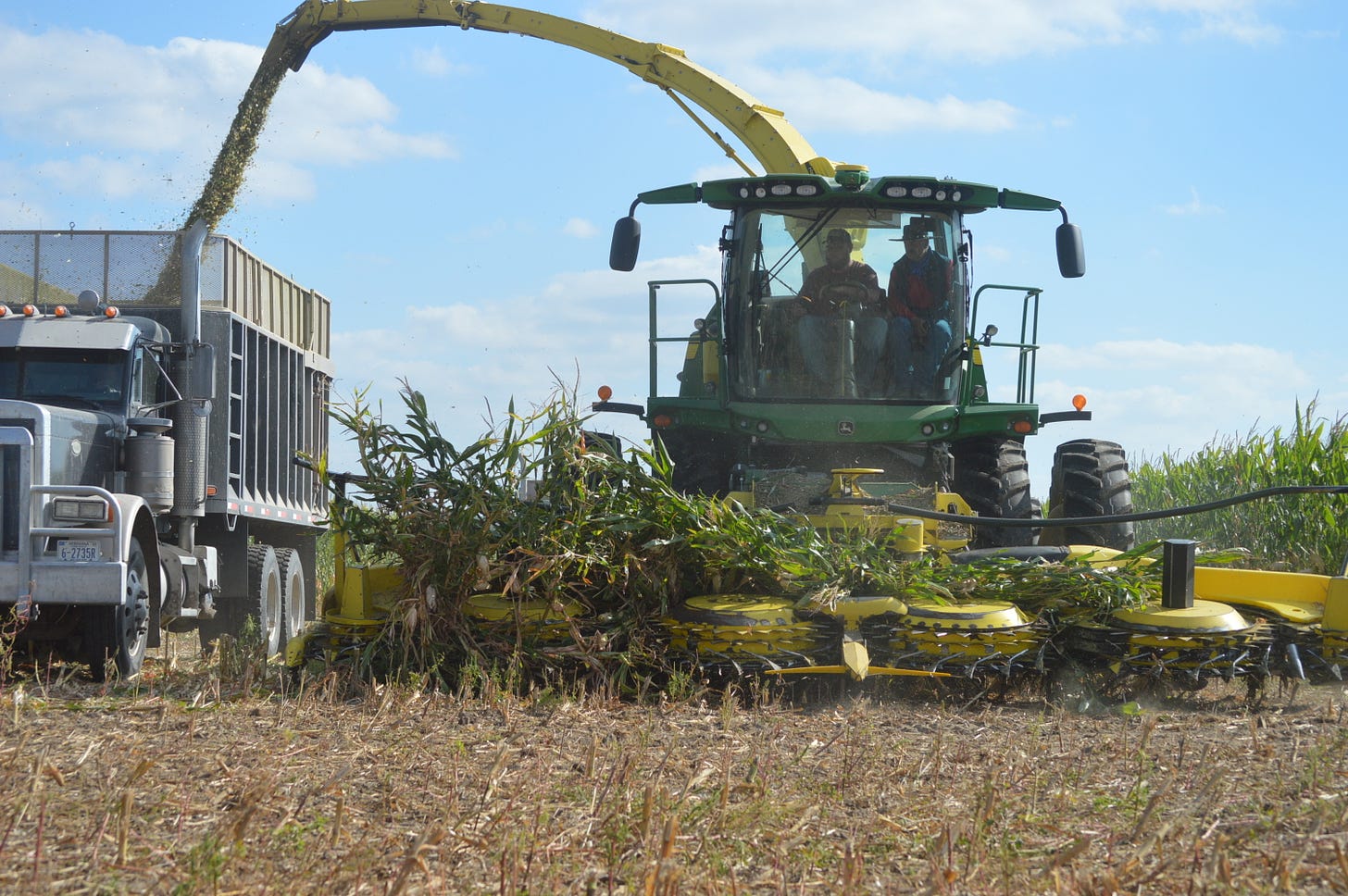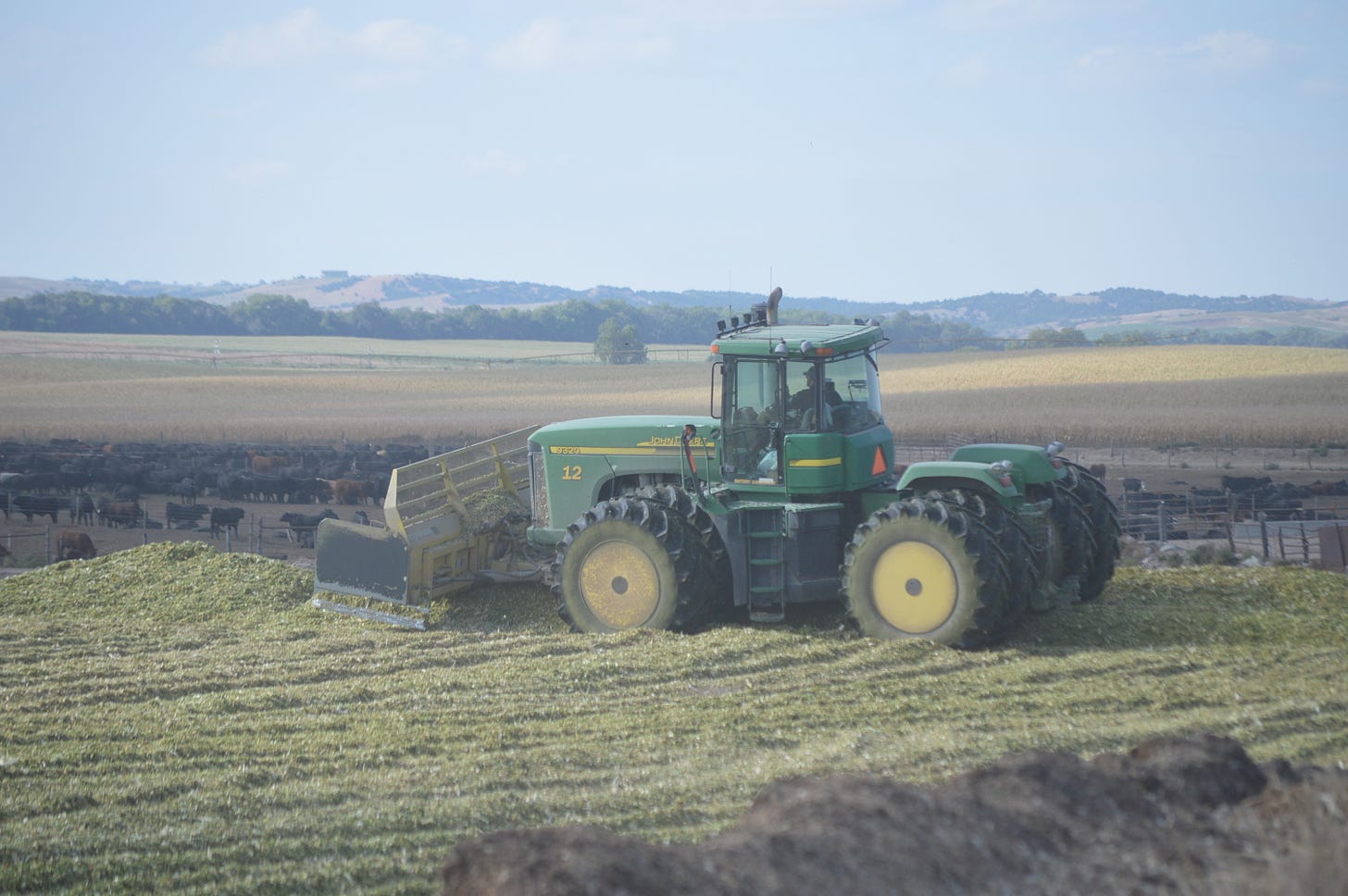Nebraska is well known as the Beef State but all that beef requires a lot of grain and forages to get from the pasture to the plate. The diet of a beef animal is primarily forages, grass in the pasture and hay when the growing season has ended or the grass is covered in snow. Even in the a grain-fed beef animal, 74% of their lifetime diet is forage. Much of that forage in the finishing stage comes in the form of corn silage. The stalks and leaves provide the forage while the corn itself adds energy to the diet.
Adams Land and Cattle in Broken Bow has the capacity to feed about 125,000 head of beef which will ultimately provide high quality beef to about 3.2 million people. To feed all of those animals, Adams needs to have a large pile of silage and they actually have four large piles. The process of growing and harvesting silage for that many animals is complex and very time sensitive. Let’s investigate that process.
Mother Nature has a big influence in the growing and harvesting timeline for silage. The crops are planted about the first of May and typically harvest will begin around Labor Day. The excessive moisture we had this spring delayed planting and initial growth, bumping that harvest window back about a week. Every acre of corn that the Adams farm crew plants will be harvested for silage. Changes in corn seed hybrids over the years have increased pest and disease resistance while producing a taller stalk that will yield more tonnage per acre.
The harvest window is about two weeks long in order to achieve the ideal moisture content in the corn so that the fermentation process will be effective. If the temperature and wind are above normal during the harvest, it shortens the window of opportunity for getting the fields cut and still achieving the desired moisture level so additional choppers, trucks and packers will be used to accelerate the harvest. Adams also selects hybrids with different growing day lengths in order to stagger when fields will be ready. On average, there will be 4 choppers, 45 trucks and 8 packing tractors working during the peak harvest.
Once the chopping begins, the 1000 horsepower choppers can burn up to 45 gallons of diesel per hour while cutting hundreds of tons of silage. The monitors in the choppers allow operators to see the moisture content and yield as the corn is chopped and put into the trucks for delivery to the pile. Every load of silage is weighed going into and coming out of the silage pile so that the nutritionists who calculate the feed rations can be aware of how much feed is left on the pile as the year progresses. The majority of the silage to meet the dietary needs of the entire feedlot for one full year is harvested in the two week silage chopping period.
Once the trucks dump the silage on the pile, packers go to work pushing and packing the pile as tightly as possible. Once the pile is packed, it is covered and sealed with plastic so the fermentation process can begin, thus increasing the longevity of the feed. The pile is uncovered incrementally, exposing only enough silage for one week of feeding. The goal is to have the pile basically empty by the time its harvest season the following year without running out before that. The south lot at Adams, once filled and packed, will hold 80,000 ton of silage.
Once the silage is harvested, planting crews will return to the fields and plant cover crops. Since the fields are used to grow corn every year, the addition of cover crops helps hold the soil moisture, improves weed control, reduces irrigation needs by retaining more of off-season moisture and improves the soil microbiome. Adams also utilizes compost from the feedlot pens as a natural source of nitrogen for the fields.








Thank you Kelli! (From a Loos fan in southern Ontario who shares Trent’s concerns about the many challenges and threats to agriculture.)